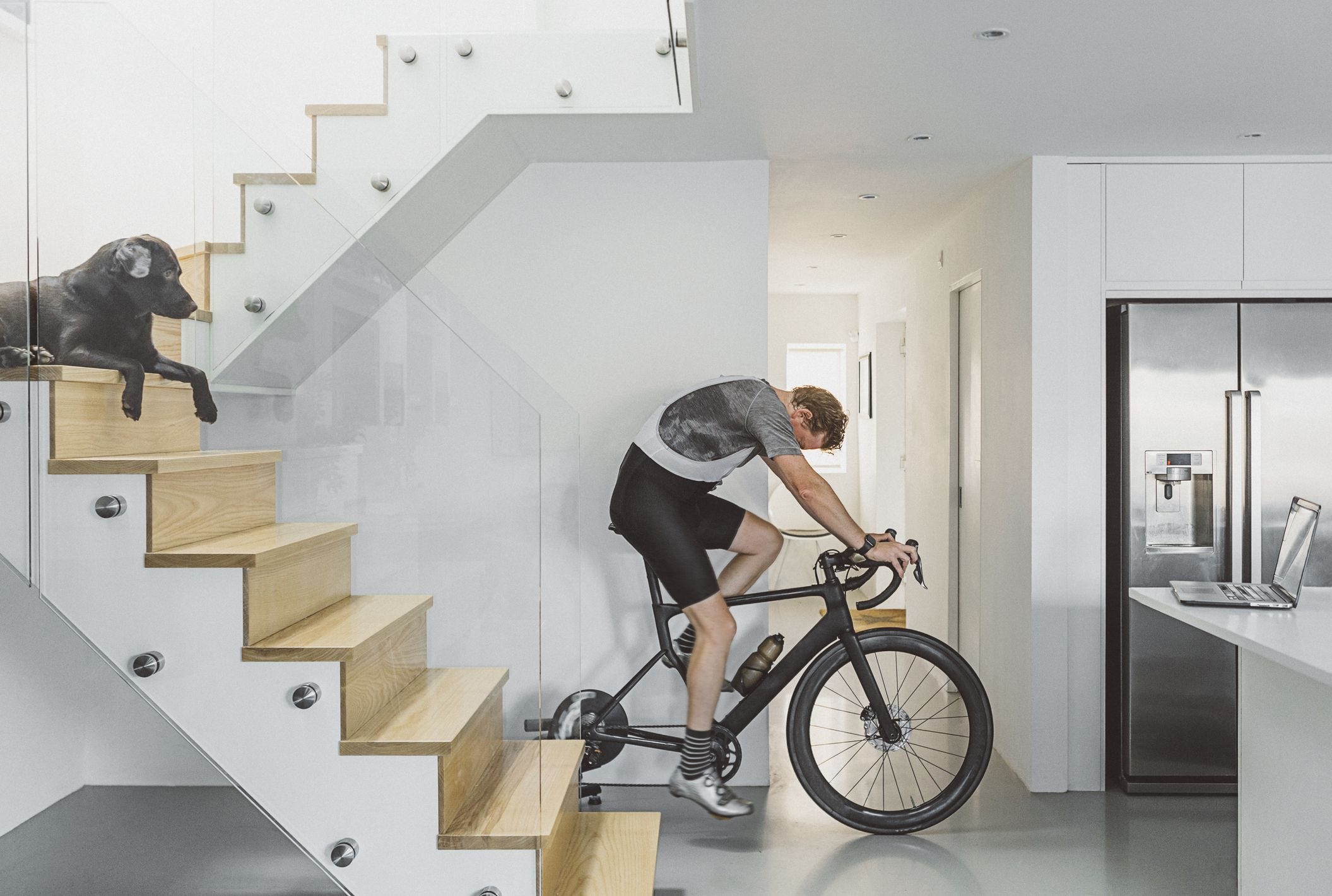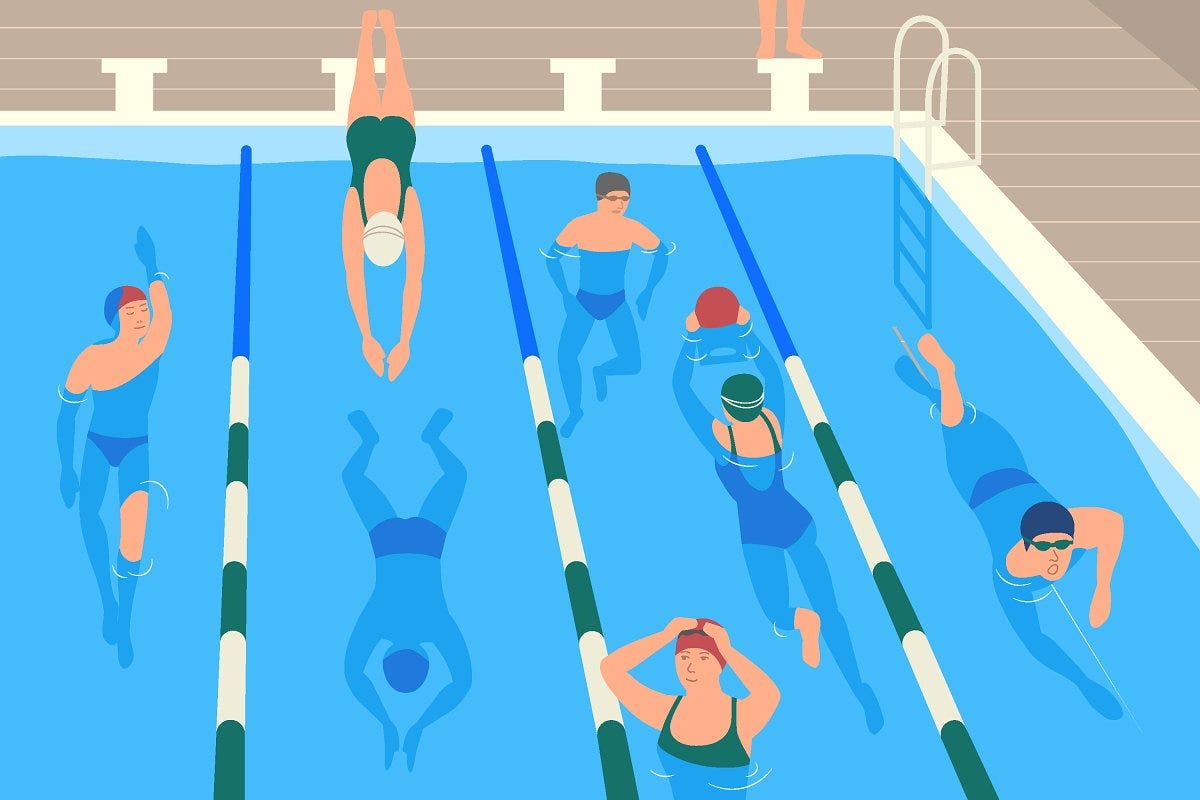Over on intervals.icu forum Clive King Asked:
“ your analysis for Polarised is very interesting even if I struggle to stay in the Polarised zone in any week (the lure of enjoying cycling persists). There is much debate on whether you should mix endurance with HIIT and I’d be interested to understand how this relates to polarised training with Z1/2 and Z5/6 being the focus in any one week”
So lets address that question here. Notably should you just train at base intensity and nothing else over the-off season? What are the pros and cons?
What is base training?
Starting at the basics, “base” training, is training at low intensity in what Seiler describes as zone 1 and what Allen/Coggan describe as zone1 /zone2. Zones can be defined using power or heart rate. If you are using the 5/6/7 zone model then you will recall these descriptions:
Active Recovery: less than 55% of FTP || this is low base
Endurance: 55–75% of FTP || this is high base
Tempo: 76–90% of FTP
Threshold: 91–105% of FTP
VO2Max, 106–120% of FTP
Neuromuscular, 121% of FTP
So “base” training is training at power threshold of less than 75% of FTP. We made a free tool for you to quickly find out your training zones and training-intensity-distribution here: http://fft.tips/tiz

Now every intensity comes with a duration, and you don’t just do low intensity work for 5 mins do you?? 😂 No, low intensity also implies long duration or high volume…..which is why base training is also called HVLI = high volume low intensity. We can now compare HVLI with any other method, for example:
HVLI vs HIIT ………. or
HVLI vs threshold ….or
HVLI vs polarized
Actually the last one would be interesting because polarized training is of course HVLI plus HIIT combined.
OK, now we know the terminology, what do you guys think about base training, I asked you back in September on fft.tips/community and 271 answered as follows:

So most people think it is important…..what then do athletes actually do over the off-season? A nice summary from Stoggl & Sperlich in 2015 (link) found that on average athletes do 89% in low intensity, 5% in threshold and 4% in high intensity over the winter (see figure)…sure there are many variations but this was the average:

So that’s a useful descriptive chart, but it doesn’t mean they are doing it all correctly! An audit of habits doesn’t tell us whether this is optimal just what people do. To find out what works, we really need evidence. The strongest evidence is from randomized controlled trials (RCTs) where athletes are assigned to various styles of training. Fine, let’s look at the actual evidence on what works from RCTs.
Randomized Controlled Trials involving Cyclists

Seiler’s group (2013 Scand. J. Med. Sci. Sports 23, 74–83) analyzed the performance adaptations of different types of high intensity interval training in 35 recreational cyclists were randomized to four training groups. These were: base (aka HVLIT) group trained 4–6 sessions/wk and the three HIT groups trained two sessions 4 × 4 min (94% HRmax), 4 × 8 min (90% HRmax), or 4×16 min (88% HRmax) plus 2–3 sessions HVLIT. The results? All three interval training groups tended to improve in physiological capacity after the training period, while the HVLIT group remained relatively unchanged. HVLIT was the worst.
Stöggl and Sperlich (2014 Front. Physiol. 5:33. doi: 10.3389) compared HVLIT (83/16/1%) vs. THR (46/54/0%) vs. HIT (43/0/57%) vs. polarized TID (68/6/26%) in 48 well-trained runners, cyclists, triathletes and cross-country skiers. The results? While all four groups increased time to exhaustion, the polarized group increased VO2peak (+11.7%), time to exhaustion (+17.4%), and peak performance (+5.1%) to the greatest extent. Polarized was the best and exclusive emphasis of THR or HVLIT did not lead to further improvements in endurance performance.
Stöggl and Björklund (Front Physiol. 2017 Aug 2;8:562) randomly 36 athletes to assigned to one of three groups (HIIT; polarized training; HVLIT applying no HIIT). Only the HIIT group achieved improvements in peak power/velocity and peak lactate and acute HRR was improved in HIIT (11.2%, P = 0.002) and POL (7.9%, P = 0.023) with no change in the HVLIT . They conclude that HVLIT had no effect on any performance or HRR outcomes. Against HVLIT (ie base) was the worst
Randomized Controlled Trials involving non-cyclists

Evertsen et al. (1997, 1999, 2001) randomly assigned 20 well-trained Norwegian cross-country skiers for 5 months to HVLIT vs HIT/THR. The HVLIT group spent 86% at low intensity. They found greater improvements in performance in the HIT/THR group compared with HVLIT. This is despite a 60% increase in training volume in the HVLIT group. So basically the HVLIT spent longer doing more but improved less.
What about swimmers? In a study of 10 swimmers, Faude 2008 (link) randomized them to either high-training volume (HVT) or high-intensity training (HIT). Each block was only 4 weeks and there was no difference, I am assuming high volume took longer so high volume worked but was inefficient.
Actually a new study clarifies this. Nugent et al (2019) studied 16 swimmers who were randomly assigned to an HIT group or a HVLI group that acted as a control. (HIT is the same as HIIT but without the intervals). The HIT group reduced their weekly training volume of zone 1 (low-intensity) training by 50% &increased zone 3 by 200%. At the end of the 7 week study there was actually no difference in performance BUT the HIT group completed 6 h of swimming per week compared with 12 h per week for the HVT group suggesting that HIT is a much more efficient training model. The HVLIT spent longer doing more but improved about the same
So the conclusion is that good quality well powered RCTs found base training alone to be not optimal compared to other options and might be detrimental but one study in swimmers (Nugent) found HVLI was actually ok, but still inefficient and remember this last study was only one study in 16 individuals.
Why Do Athletes Bother Do HVLI at all?
Given the limited evidence for HVLI training why bother with it at all? The answer is mainly avoiding burnout and or injury. Put another way athletes favor HVLI because despite the high volume, low intensity training (55–85% HRmax) means the effort is more tolerable (Hartmann et al., 1990). Further there is some (non-randomized) evidence that the amount of HVLIT is linked to improved race performance (Hagerman and Staron, 1982; Steinacker, 1993; Esteve-Lanao et al., 2005; Seiler and Kjerland, 2006). But only up to a point. When the amount of HVLIT by elite athletes is doubled, no further improvement in performance is evident (Costill et al., 1991), and the athletes mood is negatively affected (Raglin, 1993)….because of the massive volume they are suddenly required to do! So basically too much HVLI can definitely be a problem!
Finally, some claim that HVLI helps with physiological adaptations for gains in performance or at least the absence of a deterioration (Esteve-Lanao et al., 2007; Zapico et al., 2007; Ingham et al., 2008).
Conclusion
Should you do just base training alone? The evidence is pretty clear. Unless you are a beginner, you should always combine base with HIIT (which means polarized or pyramidal TID) to maximize training gains even in the off-season. Sure the amount of HIIT is lower in the off-season and so the amount of HVLI (base) is going to be higher as a proportion. So if you mapped it out across the year it might look at bit like this nice chart from 360Velo

If you want to know what training intensity distribution to do, we have made a calculator for that, it is called the periodization planner and it is free here: http://fft.tips/tpp.

So now you know, it is not advisable to do base (HVLI) alone. Unless that is you are just starting out. The next debate is what you should combine with HVLI….can you do it with threshold and with sweetspot…or should it just be HIIT. You might be aware I reviewed this evidence here:
My take home message:
If you train only at base intensity over the off-season: then when competition time comes, you really will have an off season!
Base on its own only works for those who haven’t been training before and only then as a temporary measure.
